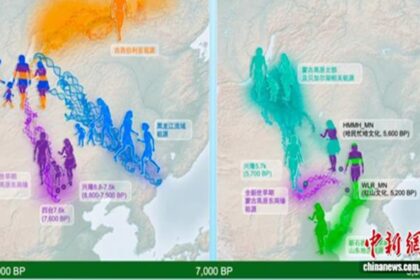A faster route from campus to graduate credentials
Japan is moving to reshape higher education with integrated five year bachelor and master degree tracks that could begin as early as the 2026 academic year. The plan, advanced by the education ministry through an advisory council, trims the standard timeline for a master by one year and allows undergraduates to start graduate level work before they finish their bachelor. Policymakers want to increase graduate school participation and train more specialists as the pool of university age students shrinks and industries seek deeper expertise.
- A faster route from campus to graduate credentials
- How the integrated five year track works
- Why the change is happening now
- Quality and oversight
- University moves already underway
- What this means for hiring and careers
- Fields that may move first
- International reach and competition
- Global models and lessons
- Timeline and what to watch
- Key Points
Today, most students complete a four year bachelor followed by a two year master. The integrated track creates a 4+1 path. Universities would blend advanced coursework, mentoring and early lab or studio placement in the later undergraduate years, then award the master after one additional year.
Officials argue that a faster route to advanced qualifications can help domestic students progress and make Japanese campuses more attractive to international applicants. Advisory members have also stressed that speed cannot erode standards. Oversight, selective admissions and clear learning outcomes are central to the rollout.
How the integrated five year track works
The integrated model keeps the standard four year undergraduate period intact, then compresses the master to one year. It also lets students begin collecting graduate credits while still enrolled as undergraduates, under strict caps and prerequisites.
Two main models
Universities can choose between two approaches. One option is a classic 4+1 route, in which students finish all bachelor requirements in four years, then complete a one year master on a defined schedule. The other option is credit acceleration, where undergraduates take a limited set of graduate seminars in their third and fourth years. Those banked credits reduce the time needed for the master to one year after graduation.
Admissions and credit rules
Programs will require prior screening and approval by the education minister. Each university will submit a detailed plan that sets admission criteria, the volume of graduate credits that can be earned early, thesis or capstone expectations, and measures to verify that master level learning outcomes are met. Quality reviews and certification are expected before launch, followed by ongoing audits.
Why the change is happening now
Japan is aging quickly. The number of 18 year olds, the core university entry group, has been declining for years. Government projections indicate that by around 2050 annual university entrants could fall to roughly 520,000 to 530,000, close to 100,000 below the number of seats available in 2022. Universities face enrollment pressure and a need to demonstrate value to students and society.
At the same time, companies in fields like semiconductors, artificial intelligence, green energy and advanced materials want graduates with deeper technical training and stronger research skills. The government sees integrated programs as one lever to produce more specialists, while still keeping time in school competitive with other countries.
The share of undergraduates who proceed to graduate school remains low by international standards. In the 2024 academic year, about 12.6 percent of bachelor graduates moved on to masters or equivalent programs. The picture differs by field. Roughly 40 percent of science and engineering undergraduates continue to graduate study, while continuation in the humanities and social sciences is much lower. Ministry data for 2023 show about 4.5 percent in the humanities and 2.8 percent in the social sciences advancing to graduate programs.
Quality and oversight
The advisory debate has centered on how to protect academic depth when timelines tighten. Completing a bachelor thesis and a master thesis within five years can strain students and faculty if not designed well. Participants urged programs to clarify which capstone outputs are required, and when a single integrated project is acceptable for both degrees.
Accreditation will hinge on evidence that the one year master delivers genuine graduate level progression. That includes advanced methodology, independent research or advanced design work, and engagement with the primary literature. External examiners, rubrics aligned to national degree standards, and clear thesis supervision plans are likely to feature in approvals.
Officials are also discussing flexibility for the future, including whether to pilot shorter bachelor periods in some fields once the integrated track has matured. Any shift would depend on learning outcomes, student support capacity and labor market effects.
University moves already underway
Although a nationwide system is new, several universities already run accelerated tracks. Keio University has a combined program that allows outstanding students to complete a master in a shortened timeframe. Hitotsubashi University operates a five year plan in selected disciplines. The University of Tokyo has announced a 4+1 route at its College of Design, scheduled to open in 2027.
Broader change is reshaping campuses. Institutions are consolidating to strengthen research and international reach, as seen with the formation of the Institute of Science Tokyo from the merger of two national universities. Modernization requires investment in facilities, digital infrastructure and student services, and that is difficult while budgets are tight.
Tuition policy is also in flux. Some national universities have begun adjusting fees within the limits set by the ministry to cope with rising costs. Scholarships and income based aid will play a larger role if more students consider an extra year to gain a master, even on an accelerated basis. The number of students entering masters programs in fiscal 2024 stood at roughly 79,000, with growth in engineering and agriculture over two decades and declines in the humanities and social sciences.
What this means for hiring and careers
Employers remain central to the reform. If firms continue to hire largely on the basis of a bachelor and train new recruits internally, many students will see little reason to add a year, even at a discounted timeline. Advisory members have urged companies to state the value of a master more clearly in recruitment processes and pay scales.
Japan’s hiring cycle is distinctive. Many students secure offers during their third or fourth year through organized job hunting known as shukatsu. Integrated programs will need to align carefully with this calendar, or provide alternative on ramps such as internships that convert to employment after the master year.
Sectors that depend on research and development, data analysis, design, policy evaluation or high end professional services are more likely to reward a master credential. Closer industry engagement, guest instruction, co supervised projects and capstone problems from companies can help ensure graduates bring immediately useful skills that justify the extra year.
Fields that may move first
Science and engineering already send a large share of students to graduate school, so departments in those areas may pilot integrated tracks quickly. Laboratory rotations, research assistant roles and capstone design projects map naturally to a compressed schedule when students start earlier in their undergraduate years.
The humanities and social sciences face a different calculus. Continuation rates are low and many students pursue careers that do not require a master. Integrated routes could still add value in areas like public policy, data rich social research, heritage management, area studies and professional writing, where one extra year can deliver practical specialization and professional portfolios.
Newer interdisciplinary domains, including design, sustainability, computational social science and digital humanities, are candidates for 4+1 structures. The planned College of Design at the University of Tokyo reflects interest in programs that blend theory, creative practice and industry exposure within five years.
International reach and competition
Officials want the reform to raise Japan’s profile with international students. Before the pandemic there were steady gains, but inflows have not fully recovered. Estimates from the national student services organization put international enrollment at just under 185,000 in recent data, about 5 percent of total tertiary students. That compares with much higher shares in the United Kingdom and Australia.
Policy targets call for international students to reach about 30 percent of enrollment by 2033. A five year combined bachelor and master can be attractive to students weighing time and cost. A weak yen also improves affordability for many families. English taught tracks, clearer credit transfer for time spent abroad, and internships with global companies can increase appeal.
Universities will also weigh research security. Governments want campuses to expand global collaboration, yet protect sensitive research. Clear ethics and security reviews, transparency in funding sources and guidance for international joint work can coexist with openness.
Global models and lessons
Japan is not alone in using combined degrees. Many universities in the United States offer optional BA or BS plus MA or MS routes that take five years. Students begin graduate seminars in their fourth year and defend a master thesis in the fifth. Europe’s Bologna Process standardized three year bachelor and two year master structures in many countries, and some disciplines use integrated master programs that confer an advanced title at the end of year four or five.
Experience abroad highlights trade offs. When programs are too rigid, students can feel locked in early. When fifth year timing clashes with a strong job market, some opt out before finishing the master. A case from India illustrates the point. Top engineering institutes have shifted away from older five year formats and toward flexible dual degrees and interdisciplinary options after students found that standard four year tracks led more directly to jobs.
The most successful models share traits. They give students informed choice points, embed internships or lab placements, ensure the master year retains depth and independent work, and align with industry calendars. Coherent advising from year two onward is essential, especially for first generation students.
Timeline and what to watch
The education ministry plans to revise standards and begin accepting applications from universities for integrated programs for the academic year that starts in April 2026. Approvals will likely be phased. Early adopters are expected to be research intensive universities and selected departments that already run fast tracks or honors style pathways.
Students considering the new route should look for clear information on eligibility, how many graduate credits can be earned during undergraduate years, thesis expectations, and financial aid for the fifth year. Questions to ask include whether the master year is cohort based, how supervision is assigned, whether internships are built in, and how the program aligns with recruitment cycles.
Faculty and administrators will watch workload and capacity. Advising, thesis supervision and lab space become tighter when more students do research in their fourth year. Institutions will need to expand mentoring, writing support and mental health services to help students handle a condensed schedule.
Key Points
- Integrated five year bachelor and master degree tracks could begin in the 2026 academic year
- Two models are planned, a classic 4+1 year route and an option to bank graduate credits during undergraduate study
- Goal is to raise graduate school enrollment and produce more specialists as the student population declines
- Only about 12.6 percent of undergraduates advanced to graduate school in 2024, with much higher continuation in science and engineering than in the humanities and social sciences
- Programs will require ministerial approval, certification and ongoing quality reviews to protect standards
- Universities with existing fast tracks include Keio and Hitotsubashi, and the University of Tokyo plans a 4+1 design program from 2027
- Employer recognition of masters degrees is crucial so students see a clear return for the extra year
- International reach is a priority, with a policy target for overseas students to reach about 30 percent of enrollment by 2033
- Approvals may be phased, with early pilots in research intensive departments and fields where graduate study is already common












